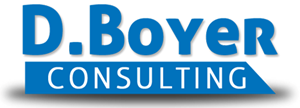Business is mostly conducted via email or phone communications.
Office hours 10:00 a.m. to 6:00 p.m, Mon. - Thurs., and 10:00 a.m. to 2:00 p.m. on Fridays.
SEND EMAIL INQUIRIES DIRECTLY TO:
Dawn.Boyer@me.com
Business is mostly conducted via email or phone communications.
Office hours 10:00 a.m. to 6:00 p.m, Mon. - Thurs., and 10:00 a.m. to 2:00 p.m. on Fridays.
SEND EMAIL INQUIRIES DIRECTLY TO:
Dawn.Boyer@me.com
Business is mostly conducted via email or phone communications.
Office hours 10:00 a.m. to 6:00 p.m, Mon. - Thurs., and 10:00 a.m. to 2:00 p.m. on Fridays.
SEND EMAIL INQUIRIES DIRECTLY TO:
Dawn.Boyer@me.com
Writing the Dreaded Cover Letter
February 20th, 2012 by Dawn Boyer
Writing the dreaded cover letter
I have customers who beg me to help them write cover letters, and I’m amazed how grownups cower in fear of writing this simple communication. If you remember the rule of threes, then it should be easy to do. You want three (3) paragraphs, with at least three (3) sentences each, and you need to provide at least three (3) pieces of vital information in each paragraph. For best results, ensure the sentences do not all start with “I” to avoid looking self-centered. The three main paragraphs can be broken down easily into further components.
The first paragraph is to let the recipient know for what, why that company, why they should be interested in you and/or who might you know in the company. The first sentence demonstrates what job – “I am applying for the job published on (where you found it) for (job title, with ID # if provided). The second point is you are demonstrating what type of research you have performed on the company to familiarize yourself with what they do, sell, manufacture, and what standing they have in the industry, “Your three-time, award-winning widget attracted my attention because my class studied the mechanics and robotic technology of your widget in college, which was considered cutting edge at that time.” The third point may be relating to your experience and background, “Your website notes you have obtained recent government contracts (if you know the ID#, plug them in here) for the Department of Defense. This contract does call for some entry-level widget building positions, for which I am qualified.” Or, you can note the name of a current employee who referred you to the position, “Ms. Jamie Smith, (job title, office location), noted she would follow up with you (hiring manager or human resources POC), to ensure you received and reviewed my resume.” (Some companies provide employee referral bonuses, so finding a POC on LinkedIn might provide a great advantage to you if they can forward your resume as a referral employee for a bonus award. Check the company website for benefits and look for employee referral bonuses on the bulleted listing.)
The second paragraph should illustrate some transferable skill or experience which has not been fully illustrated in the actual resume, or education that may not be directly related, but has provided training that could transfer into the job field. If you can write three explanatory sentences, written in an interesting manner, this would be the part that gets your full resume in front of a hiring manager. “I earned a Scout Badge for Robotics in high school, as well as participated in a nation-wide robotics contest for building widgits, for which my team earned third place in college. Later I used those skills as a volunteer worker to build a functional widget for (name a tool), which was used in a (situation), enabling (for example) disabled soldiers in the Wounded Warrior program to more quickly accommodate to their new prosthetics. While my background and experience does not yet show much work experience directly related to building widgits, my volunteer experience, skills, and education support my capability to understand and learn quickly within the field.
The third paragraph should also provide three vital points – 1) point of contact information (cell phone and email address), 2) dates and times of availability (example: 8:00 a.m. to 8:00 p.m., Monday through Friday, 9:00 a.m. – 9:00 p.m., weekends), and 3) noting a willingness to be present for either or both a telephonic interview or face-to-face interview at the hiring manager’s schedule and convenience.
And of course, your signature should be short and sweet – “Respectfully, Your Name.” Your resume and POC is already in the third paragraph, so no need to repeat this data underneath your signature line. You can scan your signature and paste the scanned graphic into the letter if you are sending them digitally, but it’s not absolutely required, and might even be deleted in many e-mail systems as potential viruses.
Using the three in three principle of the cover letter, these guidelines should easily provide the recruiter or hiring manager sufficient information and intrigue to pick up the phone or enter your email address on their keyboard for further consideration of your skill sets.
Dawn Boyer is the owner of D. Boyer Consulting where we “Optimize Human Assets, SEO Resumes, and Link-You to LinkedIn,” (https://dboyerconsulting.com); providing human resources and business development consulting for small businesses, provide resume writing coaching, and train users on LinkedIn social media. She can be reached at Dawn.Boyer@me.com.
Copywrite January 2012 by Dawn D. Boyer, D. Boyer Consulting, Va. Beach, VA
Readers Comments
Writing the Dreaded Cover Letter
February 20th, 2012 by Dawn Boyer
Writing the dreaded cover letter
I have customers who beg me to help them write cover letters, and I’m amazed how grownups cower in fear of writing this simple communication. If you remember the rule of threes, then it should be easy to do. You want three (3) paragraphs, with at least three (3) sentences each, and you need to provide at least three (3) pieces of vital information in each paragraph. For best results, ensure the sentences do not all start with “I” to avoid looking self-centered. The three main paragraphs can be broken down easily into further components.
The first paragraph is to let the recipient know for what, why that company, why they should be interested in you and/or who might you know in the company. The first sentence demonstrates what job – “I am applying for the job published on (where you found it) for (job title, with ID # if provided). The second point is you are demonstrating what type of research you have performed on the company to familiarize yourself with what they do, sell, manufacture, and what standing they have in the industry, “Your three-time, award-winning widget attracted my attention because my class studied the mechanics and robotic technology of your widget in college, which was considered cutting edge at that time.” The third point may be relating to your experience and background, “Your website notes you have obtained recent government contracts (if you know the ID#, plug them in here) for the Department of Defense. This contract does call for some entry-level widget building positions, for which I am qualified.” Or, you can note the name of a current employee who referred you to the position, “Ms. Jamie Smith, (job title, office location), noted she would follow up with you (hiring manager or human resources POC), to ensure you received and reviewed my resume.” (Some companies provide employee referral bonuses, so finding a POC on LinkedIn might provide a great advantage to you if they can forward your resume as a referral employee for a bonus award. Check the company website for benefits and look for employee referral bonuses on the bulleted listing.)
The second paragraph should illustrate some transferable skill or experience which has not been fully illustrated in the actual resume, or education that may not be directly related, but has provided training that could transfer into the job field. If you can write three explanatory sentences, written in an interesting manner, this would be the part that gets your full resume in front of a hiring manager. “I earned a Scout Badge for Robotics in high school, as well as participated in a nation-wide robotics contest for building widgits, for which my team earned third place in college. Later I used those skills as a volunteer worker to build a functional widget for (name a tool), which was used in a (situation), enabling (for example) disabled soldiers in the Wounded Warrior program to more quickly accommodate to their new prosthetics. While my background and experience does not yet show much work experience directly related to building widgits, my volunteer experience, skills, and education support my capability to understand and learn quickly within the field.
The third paragraph should also provide three vital points – 1) point of contact information (cell phone and email address), 2) dates and times of availability (example: 8:00 a.m. to 8:00 p.m., Monday through Friday, 9:00 a.m. – 9:00 p.m., weekends), and 3) noting a willingness to be present for either or both a telephonic interview or face-to-face interview at the hiring manager’s schedule and convenience.
And of course, your signature should be short and sweet – “Respectfully, Your Name.” Your resume and POC is already in the third paragraph, so no need to repeat this data underneath your signature line. You can scan your signature and paste the scanned graphic into the letter if you are sending them digitally, but it’s not absolutely required, and might even be deleted in many e-mail systems as potential viruses.
Using the three in three principle of the cover letter, these guidelines should easily provide the recruiter or hiring manager sufficient information and intrigue to pick up the phone or enter your email address on their keyboard for further consideration of your skill sets.
Dawn Boyer is the owner of D. Boyer Consulting where we “Optimize Human Assets, SEO Resumes, and Link-You to LinkedIn,” (https://dboyerconsulting.com); providing human resources and business development consulting for small businesses, provide resume writing coaching, and train users on LinkedIn social media. She can be reached at Dawn.Boyer@me.com.
Copywrite January 2012 by Dawn D. Boyer, D. Boyer Consulting, Va. Beach, VA









